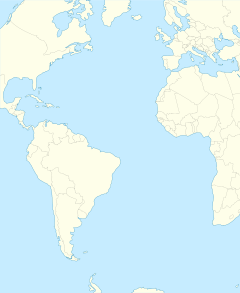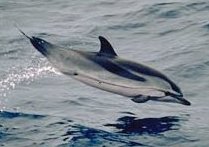Whale sanctuary in the Mediterranean
| Mediterranean whale sanctuary | ||
|---|---|---|
|
|
||
| Location: | Atlantic Ocean , France , Italy , Monaco | |
| Next city: | Genoa , Nice , Monte Carlo | |
| Surface: | 87,500 km² | |
| Founding: | 1999 | |
The whale sanctuary ( Italian : Santuario dei Cetacei , French : Sanctuaire Pelagos ) is a marine reserve between Sardinia and the coasts of the Italian regions of Liguria and Tuscany , as well as Monaco and the Côte d'Azur in southern France . It belongs to the Specially Protected Areas of Mediterranean Importance of the United Nations Environment Program .
The sanctuary
The marine reserve was established in 1999 in international waters at the instigation of the three adjoining countries France, Italy and Monaco. Adjacent stretches of coastline are in France the Côte d'Azur and the island of Corsica , in Italy Liguria, Tuscany and the north of Sardinia as well as the Principality of Monaco. The whale sanctuary extends in the Corso-Liguro-Provençal basin from Cap d'Escampobariou (near Toulon ), to Capo Falcone and Capo Ferro in Sardinia, to the Chiarone river in Tuscany. The coastline described reaches a total length of 2022 kilometers.
The whale sanctuary has a surface area of approximately 87,000 square kilometers and is so likely to spot a marine mammal that whale watching has become a popular attraction.
fauna
More than 8500 macroscopic animal species have been recorded in the protected area. This means that between four and 18 percent of all marine life live in this region, which comprises just 0.024 percent of the total ocean surface.
The Mediterranean section that the whale sanctuary includes has a significant concentration of whales , which find a particularly good food supply there. The sanctuary is home to twelve species of marine mammals , including the second largest creature on earth, the fin whale ( Balaenoptera physalus ), the sperm whale ( Physeter macrocephalus ), the pilot whale ( Globicephala melas ), the common dolphin ( Delphinus delphis ) and the bottlenose dolphin ( Tursiops) truncatus ), the striped dolphin ( Stenella coeruleoalba ), the round-headed dolphin ( Grampus griseus ) and the Cuvier-beaked whale ( Ziphius cavirostris ). The minke whale ( Balaenoptera acutorostrata ), the rough-toothed dolphin ( Steno bredanensis ), the killer whale ( Orcinus orca ) and the little killer whale ( Pseudorca crassidens ) are less common .
In 1992, a population survey was carried out by the Istituto Tethys , the Greenpeace organization and the University of Barcelona before the water surface was established . 32,800 striped dolphins and 830 fin whales were counted. However, another census in August 2008 showed a sharp decline in whale species, which was attributed to poor protection of marine mammals. Only a quarter of the fin whales and less than half of the striped dolphins could be registered.
See also
Web links
- French Pelagos homepage at the Parc national de Port-Cros (French)
- Santuario dei Cetacei at the Italian Ministero dell`Ambiente (it.)
- www.thetys.org
Individual evidence
- ↑ www.sanctuaire-pelagos.org ( Memento of the original from August 20, 2008 in the Internet Archive ) Info: The archive link was inserted automatically and has not yet been checked. Please check the original and archive link according to the instructions and then remove this notice.
- ↑ Statistics at sanctuaire-pelagos.org ( Memento of the original from January 16, 2012 in the Internet Archive ) Info: The archive link was inserted automatically and has not yet been checked. Please check the original and archive link according to the instructions and then remove this notice.
- ↑ a b Population statistics from Greenpeace, as of August 2008 ( MS Word ; 6.9 MB)


